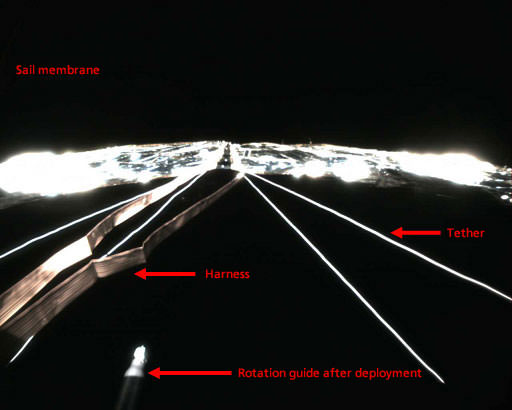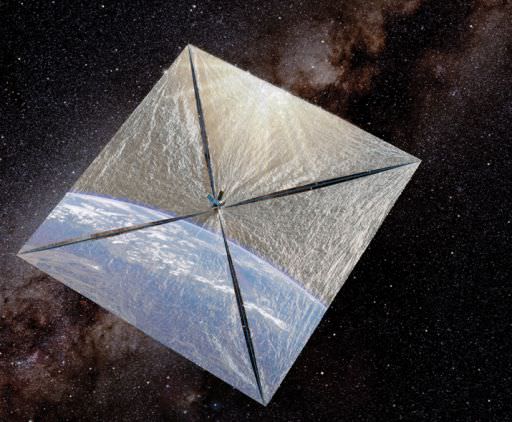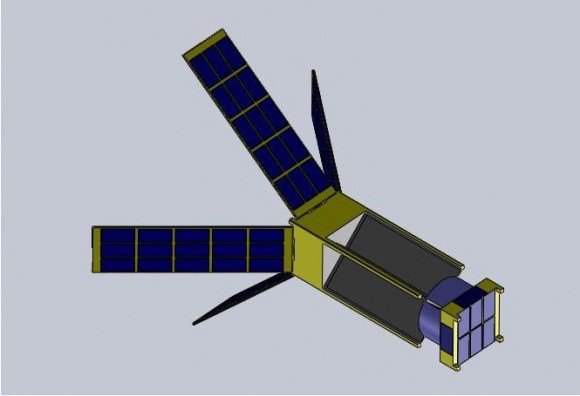[/caption]
New images and data from the IKAROS solar sail show the thin solar film has deployed and expanded successfully and is now generating power. Since its launch on May 21, 2010, teams from the Japan Aerospace Exploration Agency (JAXA), have been painstakingly checking out all the systems on IKAROS before deploying the sail, and even the process of unfurling the sail had been a slow process. JAXA began to deploy the sail on June 3, analyzing each step before proceeding. Yesterday, JAXA released a photo of a partially deployed sail (below), but didn’t offer much information as far as the status. But they now have confirmed that the sail was successfully expanded and is generating power. IKAROS is now about 7.7 million km from Earth.
In the image above, the harness is an electrical connection between the membrane and the main body, and the tether is the mechanical connection between the membrane and the main body.
And now comes the big test of the solar sail: will it provide the ability to navigate the spacecraft?
“We will measure and observe the power generation status of the thin film solar cells, accelerate the satellite by photon pressure, and verify the orbit control through that acceleration,” JAXA said in a press release. “Through these activities, we will ultimately aim at acquiring navigation technology through the solar sail.”
The craft will head towards Venus, and the exciting part will be finding out how fast and accurate the solar sail can fly.
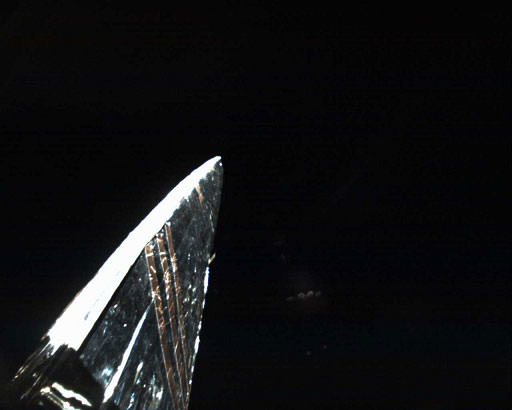
From the IKAROS blog (translated from Japanese):
First, the spin rate and learned that he had first IKAROS have successfully deployed from the attitude data. Then, I was part of the downlink data captured with the camera image monitor confirmed that the sail has been deployed from the image. On June 10 has been expanded to clean the sail, “stretched states” get the picture, confirmed the successful deployment of the sail after deployment finished the second check.
Also check the power of solar cells was carried out together, we achieved minimum success!
Power will be realized with the world’s first solar powered sail development.
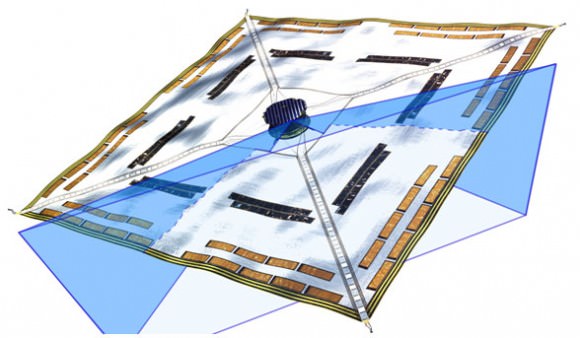
See the IKAROS webpage for more info and detailed graphics.
Sources: JAXA, IKAROS blog

